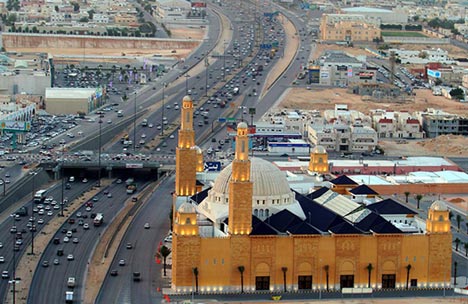 On Behalf of 
Business & Finance Club - Riyadh - Industry: THE promise of green energy has intrigued the Middle East, where concern about future reserves runs deep, but Saudi Arabia’s recent plan for a multibillion-dollar investment in traditional oil projects underscores lingering concern about betting on renewables.
Riyadh plans to spend $170 billon over the next five years on energy and oil refining efforts; the country’s state-owned oil company, Saudi Aramco, will bankroll little more than half this endeavor. The energy giant called it unrealistic for Saudi Arabia to plow into alternative energy sources when the No. 1 cash crop of oil has built its wealth.
“I don’t think that’s surprising,” said Eurasia Group energy analyst Will Pearson of the guarded approach, adding that Saudi Aramco has long been hesitant given the state’s status as the world’s leading oil producer.
Without a “huge, revolution(ary), game-changing technology,” an abrupt shift in the “fuel mix” is doubtful, said Pearson, who puts more stock in green technologies gradually scooping up market share. Given the abundance of other resources, the Saudi government is more likely to make such nascent energy sources a smaller part of its overall budget, he argued.
Despite trepidation, the Gulf country has been drawn to the “relatively unproven technologies” of biofuels and electric vehicles even though, for the most part, “people are going to be dependent on the oil sector for transport,” Pearson told OilPrice.com.
Given its access to sunlight, Saudi Arabia has great potential to become a major solar player but has not made “too much concrete progress so far,” he said. Saudi Arabia is also taking aim at clean water. In a nation where water is scarce, Riyadh plans to build a desalination plant to deliver cheaper, cleaner water. Yet growing pains are bound to accompany this push away from traditional oil and gas, analysts warn.
“You have to come up with the right regulatory regime,” Pearson said. While some companies are already doing “quite well” in this young energy category, traditional fossil fuels are still a less costly option, he said.
An international carbon price would help but “I don’t think there’s been a lot of progress on that,” he said. The bottom line is that the new industry has to beat traditional hydrocarbons, said Molly Williamson, a consultant and scholar at the Middle East Institute in Washington focused on Middle East and energy issues. “If you develop an alternative energy source that is effective, that is available, that is reliable, but it is the equivalent of $12 a gallon for gasoline, it’s not going to make it,” she charged.
Though it’s uncertain how much these new technologies will cost, “what we know is it isn’t cheap,” Williamson told OilPrice.com. “You’re looking at a long-term projection of unknowable cost. The people that can do that now are the people who can afford it.” This includes not just Gulf nations, she explained, but countries with hard-currency reserves.
What is promising is that many Gulf countries, as well as oil-producing regions in the Middle East and North Africa, are actually announcing “targets for renewables,” investigating financing mechanisms, and laying the groundwork to bring new types of energy “into the fuel mix,” said Pearson.
The eager drive toward alternative energy is, in part, a bid to meet two of the fastest-growing markets in the world: China and India, Williamson maintained. “The United States has been saying on the record, publicly, repeatedly, we don’t want foreign oil,” Pearson explained. Gulf nations now “see an alternative market, and that market overwhelmingly is Asia.”
In the oil-producing pockets of the Middle East and Africa, there is “growing recognition” that developing wind and solar power can help free up natural gas or oil for export, which is more lucrative, she added.
The Middle East has dabbled in new brands of energy for a decade, but the “incredible run-up” that took place in 2007 to 2008 on the heels of the economic crisis made it “more dramatic,” said Williamson.
Apart from Saudi Arabia, Egypt, which is facing dwindling oil and gas reserves, said it would host a Dutch factory that will play a key part in its bid to create solar energy.
And energy importer Morocco is planning to embark on a large solar energy project with a $9-billion price tag that is expected to produce about 40 percent of the country’s power by the year 2020. The North African state also has a windmill farm near the city of Tangiers.
But the United Arab Emirates has articulated the most avant-garde vision on new energy with the Masdar Initiative, said Williamson, referring to the effort to usher in renewable energy solutions and clean technologies. “They want to be the first carbon emissions-free country on the planet,” she explained. “They have come up with a very ambitious plan and they have already financed it fully.”
This makes the UAE, by far, “ahead of the game” compared to its neighbors in protecting itself against the “shocks and volatility” of traditional markets like the US, Williamson said.
|